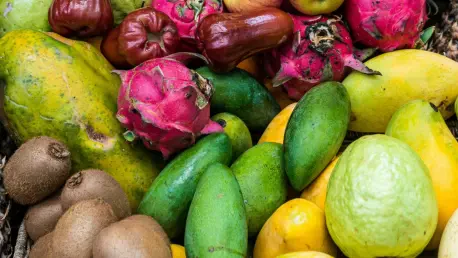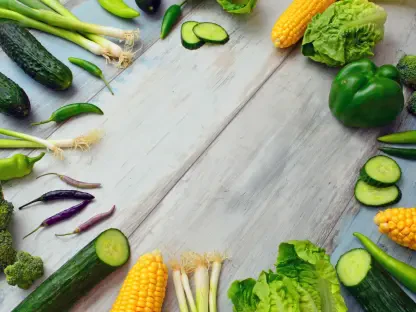The current landscape of the fruit and vegetable market is experiencing notable transformations as Central Asia transitions production towards Eastern Europe, leading to significant movements in pricing. As outlined in the EastFruit weekly market update for the period of June 7 to June 15, 2025, seasonal fruits and berries have welcomed a decline in prices, while cherries have emerged as a leading product within the fruit segment. This gradual shift in geographic production and supply activities has influenced the dynamics of trade, with variations observed in demand patterns for various vegetables such as onions and potatoes. The fluctuations provide insight into the intricate workings of the agricultural market, revealing the complexities of season-dependent production cycles and regional market demands.
Price Trends and Product Dynamics
Decline in Seasonal Fruit Prices
Market analysis has highlighted a broad decline in prices for seasonal fruits and berries, driven largely by regional production shifts and changes in supply. Cherries, once a relatively costly item, have now become more dominant, thanks to enhanced production capacity. The transition towards Eastern Europe has enabled an increase in supply, nudging fruit prices downward and making them more accessible to consumers. Meanwhile, strawberries have witnessed heightened demand, particularly those suited for freezing, catering to export markets like Canada and the United States. This has contributed to diverse pricing outcomes across different regions, showcasing the interplay between local production capacities and international demand requirements.
Seasonal vegetables such as onions and potatoes remain resilient, maintaining their popularity amid shifting market trends. However, the supply consistency has rendered prices stable, despite regional fluctuations in demand linked to the timing and quality of shipments. Commonly consumed vegetables have seemingly evaded the price drops characteristic of the fruit segment, nonetheless influencing a wider market strategy anchored in reliable agricultural production collaborations. In Ukraine, cucumbers have enjoyed increased production levels, leading to reduced prices, while white cabbage encounters a price surge due to low supply levels. This scenario elucidates the vigorous shifts within agricultural markets globally, assigning pricing outcomes as reflections of supply capabilities and demand intensities.
Agriculturally Influenced Market Moves
Market activity on platforms like the EastFruit Trade Platform has undergone a slowdown amid regional transitions, highlighting the importance of geographical changes driving pricing and supply levels. The regional shift with the inherent fluctuations in production contributes to varied trading activities among different countries, presenting a dynamic backdrop for analyzing market performance. Ukraine, in particular, has established a formidable market presence by amplifying the supply of seasonal fruits and vegetables, thereby offering competitive prices to consumers. This contrasts sharply with Uzbekistan, where a decline in listings stems from the seasonal completion affecting cherries, characterized by significant local supply and demand harmonics.
Supply of basic vegetables such as potatoes and onions remains robust, ensuring consumer expectations are met without significant price volatility. Yet, cabbage has encountered a supply shortage, resulting in increased prices. Such fluctuations in offerings mirror the seasonal shifts and corresponding quality considerations, crafting a comprehensive picture of an ever-evolving trade environment enriched by differentiated product availability and prospects. Market contributions from various countries spanning Central Asia are subject to varied consumer demands and regional considerations, laying the groundwork for a multifaceted analysis of global trading environments within agricultural domains.
Regional Production Shifts and International Demand
Impact of Regional Production Shifts
Central Asia’s pivotal role in seasonal fruit production, now transitioning toward Eastern Europe, has initiated shifts beyond mere pricing alterations, bearing consequences for trading activities on broader scales. Uzbekistan, in particular, has experienced escalated cherry prices as the local season approaches its conclusion, reflecting the intricate dynamics of regional timing on market performance. Production shifts accentuate the diverse contributions of countries encompassing the Central Asia region, informing nuanced discussions surrounding changes or adaptations in consumer trends. The interplay among supply, price, and demand considerations exemplifies vibrant market evolutions influenced by specific agricultural cycles and broader international considerations.
The enhanced production outputs in Ukraine illustrate the adaptability within agricultural markets, enabling competitive pricing strategies fueled by increased supply volumes. Divergent from the pricing and supply dynamics of certain Central Asian countries, Ukraine has extended regional reach through expanded cucumber and strawberry offerings, contributing to more equitable pricing structures for consumers. Such dynamics infuse the regional trading landscape with a layer of complexity, as variations in product offerings prompt broader implications for understanding international market demand and supply relationships. Ultimately, the strategic direction in regional production shifts intertwines with cultivation efforts serving anticipated market purposes and needs.
International Market Considerations
The expansive international market attention towards sour cherries earmarked for freezing accentuates import interests from countries such as Canada and the United States, driving regional priorities and purposeful agricultural responses. Sour cherries have become emblematic of responses to corresponding international demand trends, propelling discussions on tailoring agricultural outputs to align with broader market needs. This demonstrates the diverse implications inherent in adjusting production strategies across numerous countries, where agricultural talents yield opportunities for embracing the fluctuations characterizing market landscapes. The flexible approaches potentiate the strategic advantage reaped from catering to wider consumer interests while adjusting pricing and product offerings accordingly.
The nations actively engaged in this agricultural shift have provided substantive opportunities reflective of international market expansion, with trading activities effectuating a cycle of renewal conducive to multifaceted analysis. The distinctive avenues possessed by these countries fuel exchanges oriented toward foundational market sectors, laying the framework for understanding wide-reaching market impacts. Agricultural production arenas interfacing with international markets signify a trajectory underscored by economic potentiality, lending valuable insights into the evolution of agricultural commerce interwoven with regional strategies dictated by larger demand footprints.
Future Implications and Strategic Insights
Strategic Responses to Market Dynamics
The ongoing transformations within the marketplace have necessitated reevaluations of current strategies, pushing countries to enhance efficiency and explore sustainable avenues for managing supply, demand, and pricing dynamics. Seasonal fruit prices provide focal points for unavoidable discussions regarding the management of agricultural outputs. Flourishing forward, countries concentrating on adopting cost-effective, resilient agricultural practices will emerge as leaders in navigating pricing implications rooted in regional shifts, alongside the intricacies of global demand. The essence of evaluating strategic responses highlights the significance of remaining adaptable to evolving market trends, thereby maintaining competitive positioning and ensuring long-term agricultural viability.
Advisable strategic insights from current developments encompass fostering international relations to bolster exports in line with country-specific capabilities and demand profiles. Emphasizing sustainable practices, including climate resilience and technological advancements in production processes, becomes imperative to achieving long-term objectives spanning viable cost-effective pricing strategies and overall resource optimization. Actionable insights underscore the possibilities presented by integrating sustainable methodologies with production cycle analyses that guarantee alignment with periodic fluctuations in regional market demands. This establishes a precedent for understanding strategic interactions underpinning market existence and ensuring continued economic prosperity.
Future Implications for Global Trade
Recent market analysis reveals a broad decline in prices for seasonal fruits and berries, largely influenced by regional production changes and supply dynamics. Cherries, historically seen as expensive, have surged in production, particularly in Eastern Europe, effectively increasing supply and reducing consumer costs. Meanwhile, strawberries are experiencing higher demand, especially those for freezing, catering to major export markets like Canada and the United States. This situation highlights varied pricing outcomes across regions, driven by the balance between local supply capabilities and global demand.
Seasonal vegetables like onions and potatoes maintain their popularity despite shifting market trends. Stable supply has kept their prices consistent, despite regional demand shifts linked to shipment timing and quality. In Ukraine, cucumber production has soared, resulting in price drops, while white cabbage costs rise due to low supply. These circumstances underscore the dynamic shifts in global agricultural markets, with pricing outcomes reflecting the interplay of supply strength and demand pressure.









